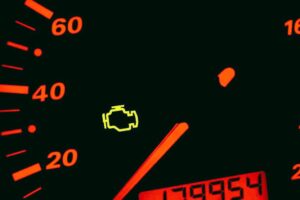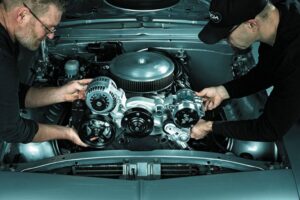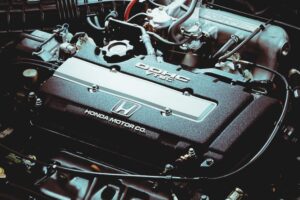Do you know if the engine in your car is an interference engine? Why do you ever need to know if it is? You need to know because if it is not an interference engine, it will not start if its timing belt fails. So, you need to know the interference engine’s meaning.
An interference engine is also a 4-stroke ICE or internal combustion engine. It is an engine in which one or more valve is fully open but is also extended into any area the piston could travel. It is in this aspect that it is different from a non-interference engine.
A non-interference engine does not allow the piston to travel into any area where the engine valves open. Additionally, valves in interference engines open earlier so they ‘breathe’ better than in non-interference engines. They also offer more advantages than non-interference engines.
Read on to learn more about interference engines, their nature, their differences from non-interference engines, and their advantages.
Interference Engine Meaning
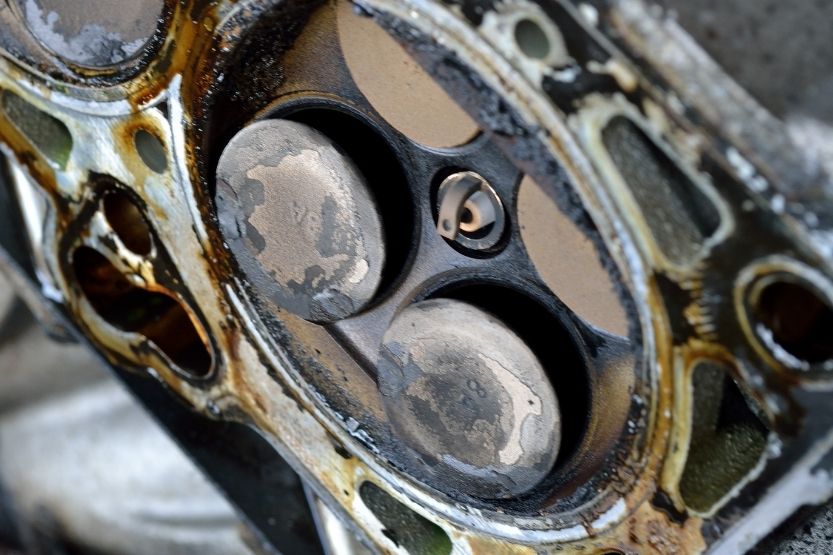
Interference Engine vs Non-interference Engine
Four-stroke internal combustion engines can be classified as interference and non-interference engines.
What is an interference engine? An interference engine is when one or more valves are fully open, extending into any area where the piston can travel.
Non-interference engines, on the other hand, do not allow the piston to travel into any area in which the engine valves open. In interference engines, the valves open earlier, allowing them to ‘breathe’ better than in non-interference engines.
Interference Engines ‘Breathe’ Better
These are some of the differences between interference and non-interference engines. Aside from these, there are many advantages of interference engines over non-interference engines. One of these advantages is that interference engines ‘breathe’ better since their valves can open earlier, open wider, and close later.
They can also achieve greater compression ratios, and their design configurations enable them to use less fuel, produce fewer emissions, and obtain more power. These are why more and more modern automobiles are equipped with interference engines.
How to Know If Your Car Engine Is an Interference Type
There’s a way you can know if your car engine is an interference type or a non-inference type. The clearance between the pistons and the valves is insufficient in an inference engine if the cam stops rotating because the timing belt has failed. This will happen if you experience serious engine failure. It will not happen in non-interference engines.
Why Modern Cars Are Equipped with Interference Engines
The majority of modern cars have interference engines. There are several reasons for this:
- Interference engines ‘breathe’ better than non-interference engines because their valves open earlier, open wider, and close later.
- Capable of getting higher compression ratios
- The design enables them to generate fewer emissions, consume less fuel, and extract additional power.
More on Interference vs Non-Inference Engine
Two Types of Gasoline-fueled Engines
Engines fueled by gasoline are usually classified as:
- Inference Engine, and
- Non-inference Engine.
There may be different types of engines, but you can divide them into these two types. You need to understand their differences because they will influence your car’s certain type of maintenance.
Interference Engines Depend on Belts
Interference engines depend on belts, chains, or timing gears. These engine components prevent the pistons from hitting the valves by making sure that the valves are fully closed as the piston approaches the top dead center of the cylinder.
The main drawback of this design configuration is that serious internal engine damage is very high. This can happen if the piston hits a valve because of a malfunctioning camshaft drive gear, drive chain, or drive belt.
Manner of Opening of Valves Between Intereference and Non-Interference Engine
One significant difference between an inference engine and a non-interference engine is how their valves open. In interference engines, one or more valves open to fully accommodate the area in which the pistons are coming in. In contrast, the pistons in non-interference engines do not travel into the open valves.
According to the engine dialect, ‘interference’ denotes the valves and the pistons’ paths. You see, for every two revolutions of the crankshaft, the pistons travel up and down twice, while the camshaft is making only one revolution.
Function of Crankshaft and Camshaft
In an internal combustion engine, the crankshaft is responsible for the pistons’ upward and downward movements and the connecting rods. Meanwhile, the camshaft is responsible for opening and closing the valves.
While the crankshaft is turning, it causes the opening and closing of the intake and exhaust valves. This allows the intake, compression, power, and exhaust strokes to happen. So, ‘interference’ is the paths that the valves and the pistons travel, specifically as their paths cross each other.
So, in simple terms, in an interference engine, the piston could occupy the exact spot of the open valve. Accurate valve timing is the only element that prevents the valve and the piston from occupying the same spot simultaneously.
Piston Does Not Interfere with the Valves in a Non-interference Engine
But in a non-interference engine, when the piston is already at Top Dead Center (TDC), it can’t go any higher than the position of the valve that is fully open. In other words, it cannot ‘interfere’ with the valves.
Again, what is an interference engine? An interference engine is a 4-stroke internal combustion piston engine with one or more open valves extending into any area the piston can reach.
Importance of Timing Chain or Timing Belt
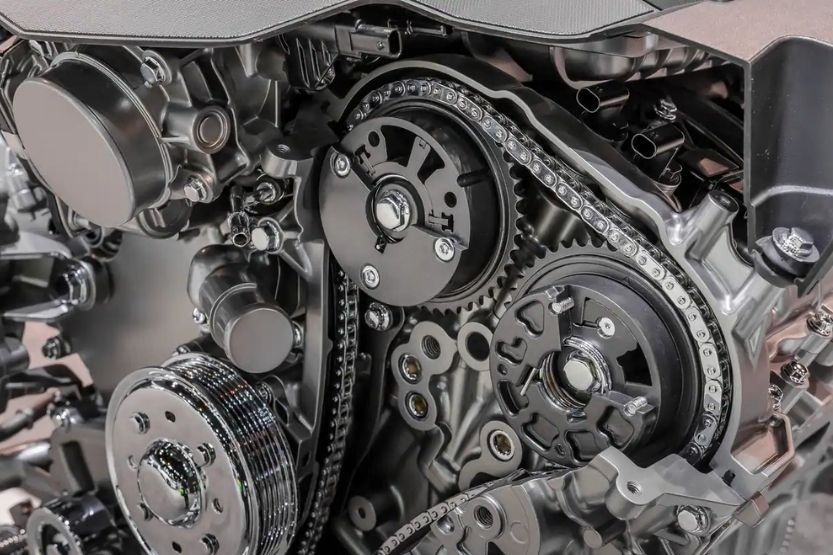
Incorrect Timing Result in Catastrophic Damage to Engine
Precise timing is essential in interference engines. Just a split second of incorrect timing can result in catastrophic damage to your engine. The pistons and the valves could collide and cause significant internal damage to the engine.
Regularly Inspect the Timing Belt and Others
In maintaining an interference engine, you should regularly inspect the timing belt, camshaft drive gear, drive chain, or drive belt. Lastly, when you discover issues, you should fix them at once.
Effect of Compromised Timing Between the Pistons and Valves
If the timing between the pistons and the valves is compromised, it could result in bent valves, broken valves, or broken pistons. Since the action is done wholly inside the cylinders, broken valve or piston parts will also damage the cylinders. They could also affect the functioning of the connecting rods.
If the timing chain or timing belt breaks completely, the engine’s valvetrain will most likely stop almost instantly, while the pistons and the heavy crankshaft will keep on moving and turning because of their momentum.
Piston Can Collide into an Open Valve
Many other serious things can happen when the timing of an interference engine is out of sync. A piston can collide into an open valve just milliseconds after the valve stops.
Bent Valves
On certain interference engines, out-of-sync timing or a loose tensioner can lead to bent valves. It’s entirely possible that only a few of the valves will be bent and will need to be replaced. However, the work will also involve the dismantling of the cylinder head.
Valve Can Bounce Around the Cylinder
If a valve completely breaks off from its stem, it could bounce around the cylinder. This will lead to more serious engine damage. If the damage is so heavy, you have to replace the engine entirely.
Effect of Broken Timing Belt in a Non-interference Engine
In this aspect, non-interference engines offer a certain advantage. If the timing belt breaks in a non-interference engine, it will simply cause the engine to stop. Since the pistons and the valves don’t cross paths, there is no risk of causing heavy damage to the engine. The most you may need to do is replace the timing belt and then readjust the engine’s timing.
How to Prevent Serious Damage to the Engine Due to a Broken Timing Belt
Regular Maintenance
There’s a way you can prevent this heavy engine damage due to a broken timing belt or timing chain. It’s the regular maintenance of the timing belt or chain that is responsible for the accuracy of the engine timing.
Replace the Belt or Chain Every 90,000 Miles
The recommendation is to replace the belt or chain every 90,000 miles. Some even say it should not go more than 60,000 miles, while others say it could stretch up to 120,000 miles. The best is to check the car’s operator’s manual or preventive maintenance schedule.
Replace Other Parts
When buying a timing belt replacement kit, the package may include additional parts like a water pump, a tensioner pulley, and an idler pulley. When you replace the belt, you should also replace said parts.
Why Only a Few Carmakers Equip Vehicles with Non-interference Engines
Currently, only a few carmakers equip their vehicles with non-interference engines. The reason is that these engines cannot meet the fuel emissions and economic standards of the government’s regulatory bodies.
The thing is, you can’t ignore your engine timing components. You need to keep up regularly with their preventive maintenance schedules if you don’t want the expenses of fixing a heavily damaged engine.
What to Do If An Interference Engine’s Timing Chain Breaks?
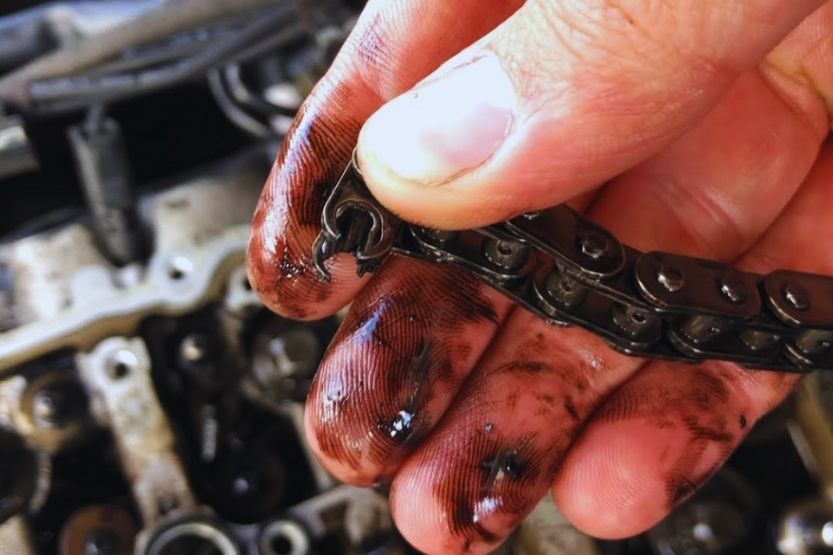
Conduct Leak-down Test
Mechanics will first conduct a leak-down test. This will show them if there are bent valves inside the cylinders.
Rebuild the Engine
If they find a huge gap in a valve, its valve may be bent. The cost of repairs will depend on the severity of the damage. If both the cylinders and the pistons are damaged, they recommend rebuilding the engine. They may even tell you to replace the engine if they can’t repair the damage.
Replace the Timing Belt
If there are no serious damages inside the cylinders and the internal engine parts, rebuilding the cylinder heads, replacing the bent valves, and just replacing the timing belt or chain will be enough.
Advantages and Disadvantages of Interference Engines
Advantages
There are several advantages of interference engines over non-interference engines. There could not be more of them today if they do not offer these advantages. Their most notable advantages over non-interference engines are the following:
1. Increased Compression Ratio
Their design offers an increased or improved compression ratio. Simply put, they fill the engine with more combustion, allowing them to provide increased fuel efficiency and greater performance.
2. Capable of Breathing Better
They can ‘breathe’ better because their valves open earlier, open wider, and close later.
3. Generate Fewer Emissions
Their design enables them to generate fewer emissions and extract additional power.
As car manufacturers produce smaller engines with more power fewer emissions and increased fuel efficiency, interference engines overshadowed the need for non-interference engines.
Interference engines are built with bigger valves that open further into the combustion chamber. The combustion chambers are also smaller to achieve more excellent compression ratios.
4. Provide Excellent Engine Performance
This design configuration enabled interference engines to provide more engine performance, less fuel consumption, and fewer emissions. But there’s also a downside to this.
Disadvantages
While they are the most common engines installed in modern cars, interference engines also have one major disadvantage over non-interference engines:
Design Is Prone to Critical Engine Failure
Its design is prone to critical engine failure: It seems that everything depends on the timing chain or timing belt. If a timing chain or belt breaks, serious damage will happen inside the engine. It can or cannot be repaired – depending on the severity of the damage.
Conclusion: Interference Engine Meaning
An interference engine is a 4-stroke internal combustion engine in which one or more valves are fully opened, extending into any area where the piston can travel. This is its main difference with a non-interference engine.
In contrast, a non-interference engine does not permit the piston to travel into any area where the engine’s valves are open. Additionally, the valves in interference engines open earlier, so they ‘breathe’ better than in non-interference engines. This is just one of the advantages of interference engines over non-interference engines.
Read next:

![Interference Engine List [and Non-Interference Engine List] interference engine list](https://roadsumo.com/wp-content/uploads/2021/06/interference-engine-list-150x150.jpg)
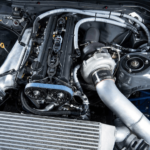
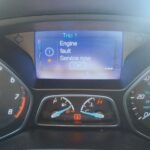
![Check Engine Light Meaning [10 Reasons Why It’s On] Check Engine Light](https://roadsumo.com/wp-content/uploads/2022/03/check-engine-light-150x150.jpg)
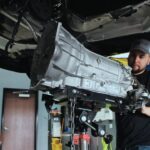
![What Is GCWR? [Meaning and How to Calculate] what is gcwr](https://roadsumo.com/wp-content/uploads/2022/07/what-is-gcwr-150x150.jpeg)
